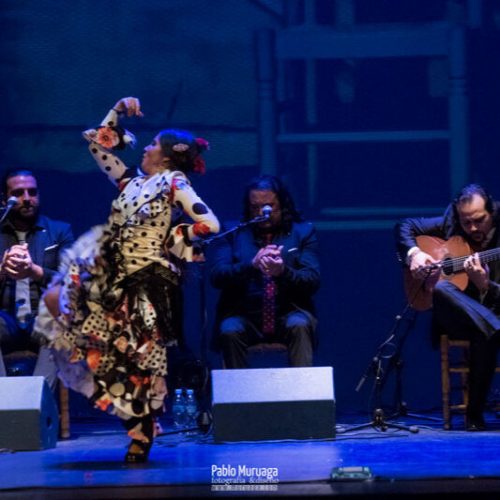
Flamenco Traditions in Spain
Dear Henry,
When you think of Spanish culture, chances are pretty high that flamenco comes to mind. But what do you really know about the traditions of flamenco? Do you know where this music, dance, and singing originated? Do you know about the many different kinds of flamenco? If you’re a foreigner like us, you probably don’t, but that’s why today we’re taking a look at some of the basics of the flamenco tradition, some particular vocabulary that often comes up when talking about flamenco, and looking at a conversation we had with Rudy López Garcés, the founder of Solera Espectáculos Granada to better understand it all. We hope this helps answer some of your questions about the traditions of flamenco here in Spain.
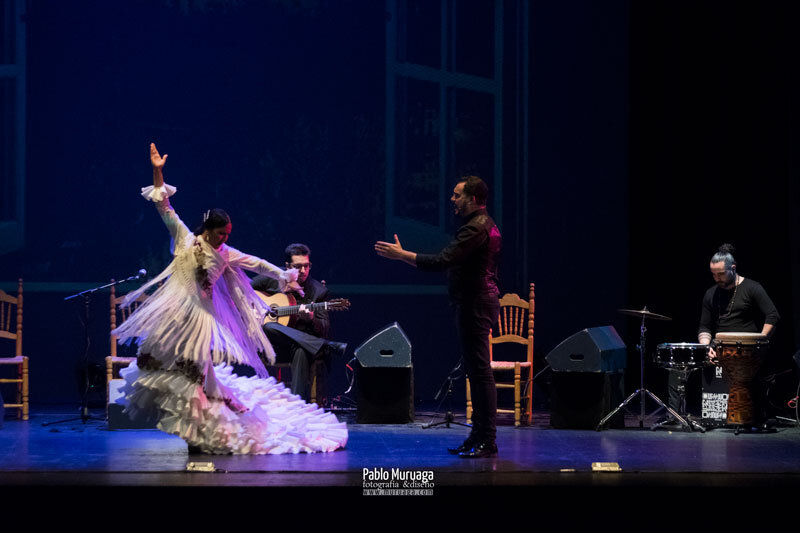 First and foremost, what is flamenco?
First and foremost, what is flamenco?
Although many people think of the dancing—especially the women spinning around in brightly-colored polka dot dresses—it’s not only the dancing! Flamenco is very much about the toque (guitar-playing) and the cante (singing). Those who are listening to flamenco often get involved by partaking in the jaleo (or ‘hell-raising’) which can include anything from clapping, stomping your feet, and shouting encouragement at the performers.
Note: Please see our vocabulary section and Rudy’s answer about the most important element of flamenco for further detail.
Where does flamenco come from?
The history of flamenco has only been recorded for the last two hundred or so years. Thus, everything before that is based on legends and the stories passed down from one generation to another. However, our understanding (confirmed through our interview with Rudy) is that it originated in Andalucía during the Spanish Reconquista. At this time, all non-Catholics were forced to convert or leave Spain which drove many ‘alternative’ cultures into hiding in the mountainsides, where it was too treacherous for the authorities to come after them.
This created a new environment of Moorish, Jewish, and Romani (gypsy, or gitana in Spanish) communities living in close proximity. It is thought that the culture of flamenco was born out of these circumstances and is therefore of mixed origins from the very start. Specifically, Cádiz, Jerez de la Frontera, and Triana (Sevilla) are considered to be the points of the ‘Holy Trinity,’ a triangle thought to cover the area where most of the cante jondo style originated (see below).
What are the different kinds of flamenco?
In the beginning, the only flamenco ‘music’ was the toque de palmas (clapping) or the use of palo seco (wooden staff/cane) to keep a beat. This rudimentary style is still practiced today and flamenco performed in this style is simply called palo seco.
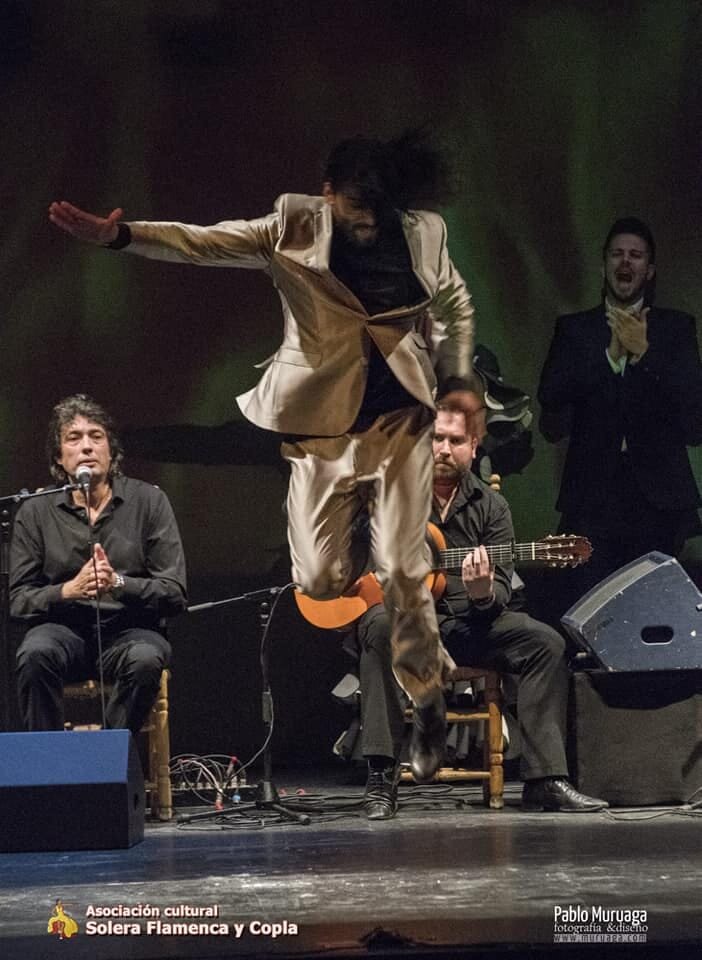 Toñas are another of the oldest styles. This family of songs includes the martinetes, which are the songs of the blacksmiths (the rhythm being supplied by their hammers beating on the anvil), the carceleras, or prison songs, and the debla, which at one time was thought to have had connections with a gypsy religious rite.
Toñas are another of the oldest styles. This family of songs includes the martinetes, which are the songs of the blacksmiths (the rhythm being supplied by their hammers beating on the anvil), the carceleras, or prison songs, and the debla, which at one time was thought to have had connections with a gypsy religious rite.
The saeta is a version of flamenco thought to have Jewish origins. Saetas are songs of devotion that are sung during the processions of Semana Santa. Although saeta is not strictly flamenco, many flamenco singers of other branches include saetas in their repertoire.
Cante jondo means “deep song,” and these are the styles of which most of the other forms derive. This branch of flamenco involves all four of the main elements of flamenco (cante, baile, toque, and jaleo) and often involves dramatic, sad storytelling.
Flamenco popular is similar to cante jondo in the sense of incorporating all four elements but it tends to be much more upbeat and joyful. As one can imagine, this sort of happy music has become the most popular among the general public.
Finally, as you can learn more about from the interview, flamenco fusión is a growing segment of the flamenco family nowadays. Because there is only so much one can do with traditional forms of flamenco, many contemporary artists will mix flamenco with other genres of music such as pop, electronic, and trap.
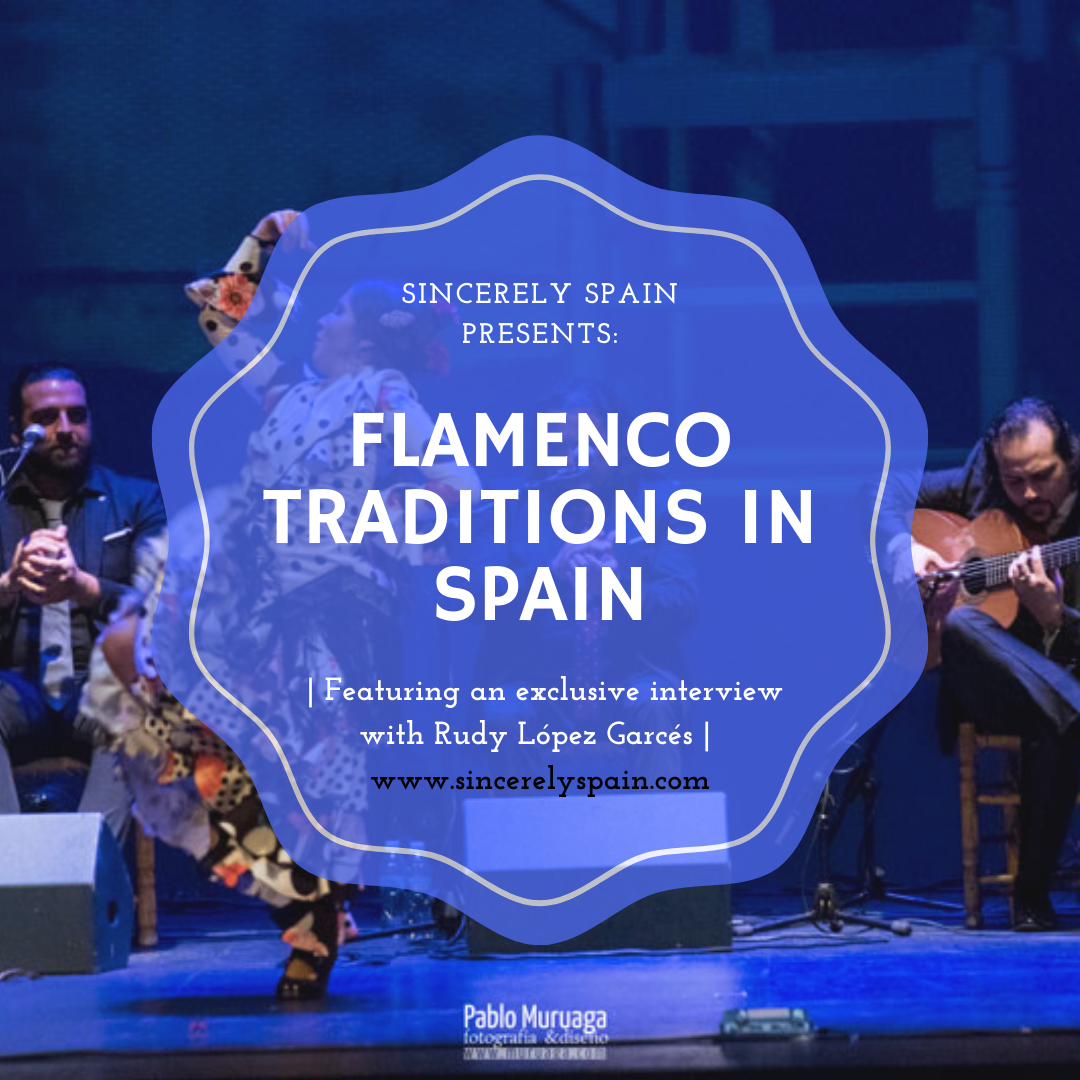 Flamenco Vocabulary to Know
Flamenco Vocabulary to Know
Baile dance
Cante singing
Cante jondo deep song (style of flamenco)
Duende a word often used to denote the indescribable magical component of flamenco*
Espectáculo a flamenco performance
Gachó flamenco artists not of gypsy heritage
Gitano/a Romani or gypsy
Jaleo ‘hell-raising’ (clapping, stomping, shouting, etc from the audience or flamenco performers)
Palo seco a wooden staff / the style of flamenco in which the beat is marked with one
Palmero a person who claps flamenco
Tablao an establishment where flamenco is performed
Toque guitar-playing
(Toque de) palmas hand-clapping
Zapateado tap-dancing type of flamenco footwork paired with las palmas
*According to Federico Garcia Lorca, “Duende could only be present when one sensed that death is possible.” It is a mysterious element of flamenco that one can sense during a flamenco performance but no one can quite explain.
Resources used:
https://www.andalucia.com/flamenco/history.htm
https://spanish-trails.com/flamenco-the-dance-of-spain/
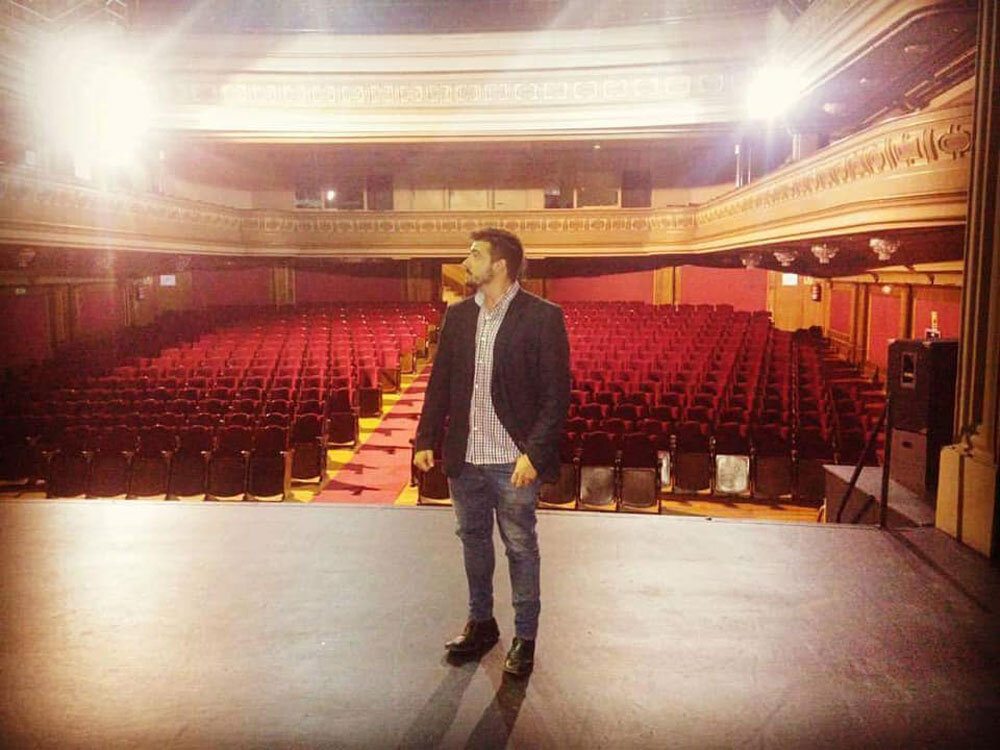 An exclusive Interview with Rudy López Garcés, the Founder of Solera Espectáculos Granada
An exclusive Interview with Rudy López Garcés, the Founder of Solera Espectáculos Granada
In order to take a more personal look at the traditions of flamenco, we interviewed Rudy López Garcés, a granadino (person from Granada) who founded the professional flamenco company Solera Espectáculos Granada. In this interview, Rudy shares his experiences and opinions as a leader in the flamenco world here in Andalucía.
Please note that this interview was conducted in Spanish and therefore the answers are not direct quotations but rather translations/interpretations of the conversation we were able to have with Rudy about these topics. our best effort has been put forth to maintain the integrity of what Rudy shared, although what follows are not his exact words.
Tell me about Associación Solera Flamenca and Solera Espectáculos Granada. How did it all start?
The association was started by my father in 2012 to promote and spread Spanish culture at the same time as supporting children with disabilities, like my brother. Through the association we organize charitable events to raise money for these children. We now have an annual event that is very well-known in Granada and a lot of famous flamenco performers have participated over the years.
When I was studying in Córdoba I needed to present a final project of how I would run a business and so I based mine on a similar concept, running a business of musical artists. When I returned to Granada I decided to actually pursue it and that’s how the company Solera Espectáculos Granada came about. Of course, at the beginning it went as you would expect—so-so—but with time I got to know the business better and I’ve been successfully running it for six years. The company is now comprised of eighty four different artists and last year alone we put on sixty concerts.
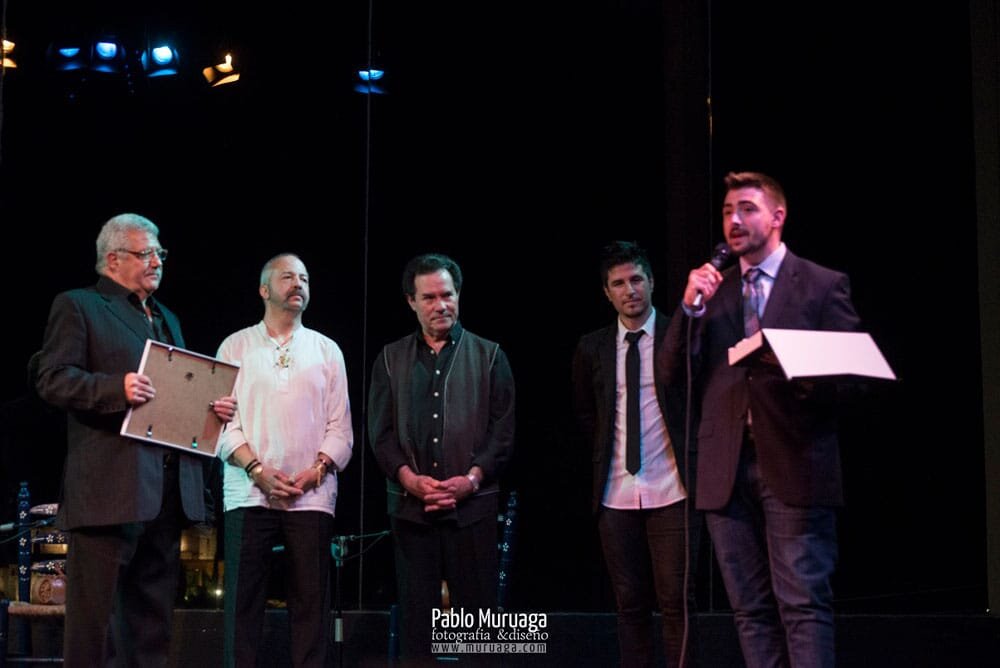 Of course, we still have the same ideals as when we started the association. However, organizing ourselves as a business allows us to perform legally and professionally. We still support children as we always have, such as organizing festivals to encourage their interest in flamenco, but then we also have the separate branch of the company that allows our artists to perform professionally.
Of course, we still have the same ideals as when we started the association. However, organizing ourselves as a business allows us to perform legally and professionally. We still support children as we always have, such as organizing festivals to encourage their interest in flamenco, but then we also have the separate branch of the company that allows our artists to perform professionally.
When I started this all, I didn’t know where it would go. I thought I’d give it a year and see and, to be honest, it’s surprised a lot of people how well we’re doing. And it’s definitely growing; we’re not only performing in Andalucía now. In fact, it’s been proposed that we’ll go to India to perform for three months—things are happening. Poco a poco.
What is your role, exactly, with Solera? Do you ever perform?
Oh no, I have no sense of rhythm, haha! I do everything else—the promotion, maintaining the website and all of our social media, sending out emails, getting in touch with the necessary people for each performance. I seek out the artists, put together the contracts, organize the groups, create the flyers, and work with companies to make sure they all get distributed. It’s a lot of work outside of the performances but my intention is that, the day of the espectáculo, nothing goes wrong!
Of course, when I go out, my friends like to pull me out on the dance floor and make me dance. I like to play guitar a bit, but it’s complicated. It would require hours and hours of work everyday to be good like my artists. That’s not the right role for me. I like to think of myself as the captain of the team who makes sure everything runs smoothly, that everyone feels comfortable and taken care of, and as the person who can stay level-headed to come up with a quick solution if anything ever does go wrong. As they say, the show must go on!
What does flamenco mean to you?
Let’s see, how can I explain this? For me, flamenco means a lot of different things. First and foremost, it’s culture. But it’s also education, a teaching tool. After that, it’s the deeper stuff—it’s fellowship. Some people will tell you flamenco is gitano, but it’s not just a gypsy tradition! It doesn’t matter who you are—flamenco is an art form and it’s an art form that was developed by the cooperation of different cultures coming together. When you listen to flamenco you can hear and feel so many different emotions. It’s an art form that allows you to let it all out and that brings people together.
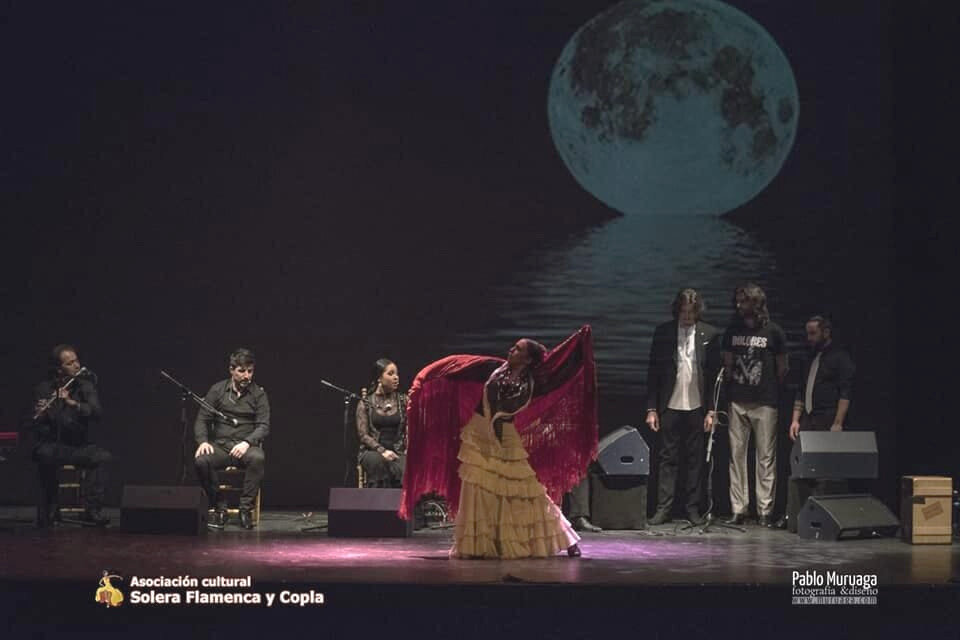 When did you start learning flamenco?
When did you start learning flamenco?
Well, I’m still learning—the world of flamenco is complicated! There are a lot of different variations and branches and you learn it through making mistakes, right? So I’ve approached it through a motto of “nadie aprenda por cabeza ajena” (nobody learns from someone else’s head) meaning that even though someone may tell me something doesn’t work, I won’t know if for myself until I try it. It’s important to know how to make mistakes and how to grow from them.
Is flamenco a family tradition for you? Is it meaningful for the rest of your family in the same way?
No, it’s not a family tradition at all! My mom doesn’t like flamenco; she comes to my concerts but that’s because she doesn’t really have a choice. My brother’s a fan of heavy metal—completely the opposite. The one who likes it is my father who, in addition to being my dad, is my business partner. He’s the one who’s always talking about flamenco. We go to concerts together, we discuss them and get into fights over it but at the end of the day we’re partners. And what could be better than having my father—the person who I trust most in this world—as my partner?
How has flamenco changed over the years, if at all? Is there room to make it ‘your own’ or is there only a correct, traditional way to perform flamenco?
Oh of course, it’s always changing! There’s always going to be the traditional flamenco, that’s never going to go away. For example, there are very famous and important flamenco competitions such as El Cante de las Minas, which takes place in Murcia. And this trophy is considered to be the most important flamenco title in Spain. That’s the traditional stuff, the flamenco jondo. But then you also have las cuevas (the caves)—these are espectáculos specifically made and configured for foreigners.
And nowadays there’s the flamenco that’s mixed with all other sorts of music like pop, electronic, trap. Basically everything that can be done with flamenco in and of itself has been done so if you want to triumph you have to be different from the rest. That’s where people like Rosalia come in. She’s invented something that isn’t quite flamenco but it has an air of flamenco. Flamenco has changed a lot—but in all ways, for the good and for the bad.
In your opinion, is there a particular element of flamenco (the singing, dancing, or instrument-playing) that is most important. Can one exist without the others?
The most important thing in flamenco is the guitar; it’s the basic instrument. But then again there’s a song that says the singing can only match the guitar and so the guitar and the singing, they’re both instrumental. Of course then you have the dancing and you can also have other instruments, like percussion and flute; the more instruments you have the more beautiful the flamenco. At least that’s what I believe. But the cante and the guitarra, those are the most important—without them you can’t have anything, not even dancing. From there, you can build everything else.
(At this point it was mentioned that his answer is interesting because, for many foreigners, when we hear ‘flamenco’ we think of the dancing.)
I don’t want to disregard the dancing; of course not. But if there’s no guitar, there’s no dancing. The dancing adds a beautiful element and through the music—the singing and playing—the dancer is able to capture and transmit these emotions to you. And perhaps that’s why foreigners remember the dancing more but it’s a triángulo mágico (trifecta) to produce that.
What can people expect when they come to a Solera Espectáculos Granada performance?
Well, I’m not focused on flamenco jondo—that’s only for flamenco connoisseurs and not everyone likes it. Instead, our espectáculos consist of flamenco popular, which is more accessible; it’s how flamenco is mixing and advancing today. And so when you come to one of my performances you’re going to get a real espectáculo; we put on a good show. I like singing that’s more varied, that’s beautiful and melodic and you mix it with beautiful dancing. There are a lot of instruments—not only the guitar but flutes, percussion, piano, even maracas. The idea is that the audience loses itself in the scene of it all coming together. My idea isn’t to simply please the people who like flamenco but to draw in the people who don’t, so that they all leave happy.
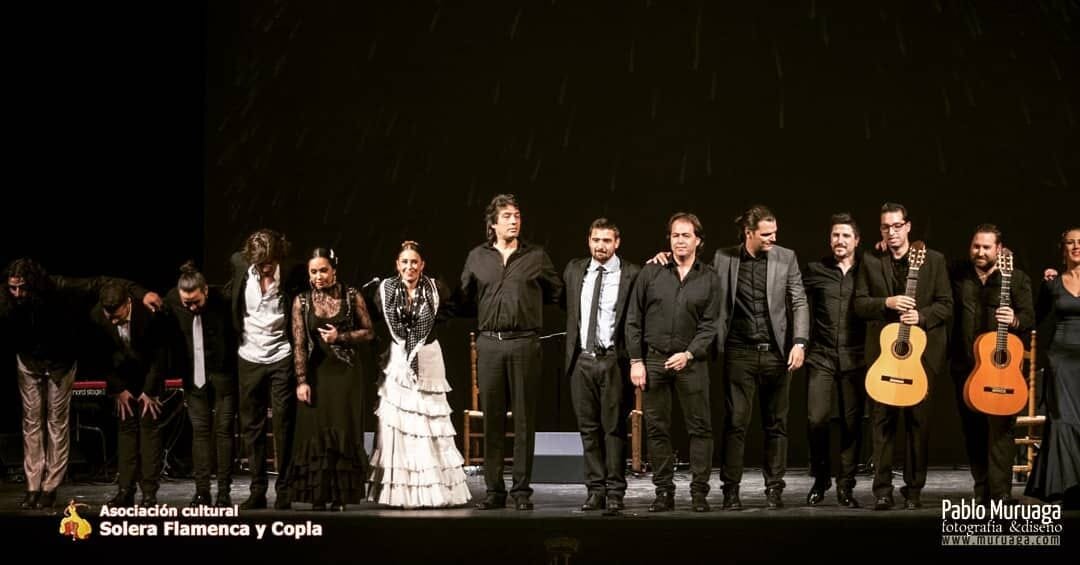 What is your goal with Solera Espectáculos Granada?
What is your goal with Solera Espectáculos Granada?
First and foremost, I want to create and promote culture. When I started this company, I wanted to change the conception that people here in Granada had of flamenco. At that time, flamenco was either las cuevas, which is made for los guiris, or the kind of flamenco jondo in which one singer just stands there and sings. For me, that’s not interesting. The idea was to create espectáculos that are really works of art; like a theater production.
The most important thing is that the people never get bored. Some flamenco performances go on for three or four hours and, frankly, I get tired…and I like flamenco! So it’s better to do something short but with a lot of punch. That’s why my espectáculos last just ninety minutes but there’s a lot of power to it. Even if you don’t necessarily come in liking flamenco, you’ll be entertained the whole time. My idea that there’s never a moment to breathe, you’ll never get bored! For me the most important thing is for people to leave thinking “ya ha acabado!?” (it’s already finished?) and to not believe they’ve already experienced ninety minutes of flamenco.
Are there any misconceptions that you believe foreigners have about flamenco?
I mean, I don’t think it’s that they have misconceptions; it’s just that they don’t know flamenco. At the same time, they admire it. Seriously, sometimes foreigners appreciate it more than the people here in Spain! Maybe I haven’t talked to enough foreigners to know, but that’s how I see it.
If someone is looking to have their first encounter with flamenco, what is the best experience you could recommend for them here in Granada?
There are a lot of good ones. For example, there’s one in the mountains called La Cueva de Rocío and what they do is not just a performance; it’s as if you’ve been invited to a gypsy wedding! You’re watching them dancing alongside you, drinking, etc and they’ll even pull you in to dance with them. They really involve the foreigners in the show.
La Canastera is the most symbolic here in Granada. It’s in the Sacromonte and so of course the setting is beautiful, with the decorations and everything, you’re pulled into an ambiance of traditional flamenco from the moment you arrive. Again, they really immerse you into it, showing you how we live flamenco here. The idea is not to put on a show for you but rather to welcome you into our home, show you what we customarily do, and allow you to participate in it.
Then you have Le Chien Andalou. It’s more about the espectáculos there. It’s very well done, but you sit down, you have your drink or eat your food, and you watch the show. It’s not as immersive as the above two.
Note: That said, I must add here that I (Dani) have been multiple times and its location makes it very convenient for visitors. If you only have the opportunity to experience flamenco at La Chien Andalou it is still completely worth it!
Does your company put on a certain show that you would recommend as well?
Definitely the annual one at Teatro Isabel la Católica (located in Granada), which happens every September. This is the most beautiful show I put together. It’s here in my hometown so, of course, I’m going to bring the best I’ve got. We do a tour of all of Andalucía during the summer and then we come back and do our final show at Isabel la Católica at the end. In addition to all of the performances we took on the road, we incorporate new things as well.
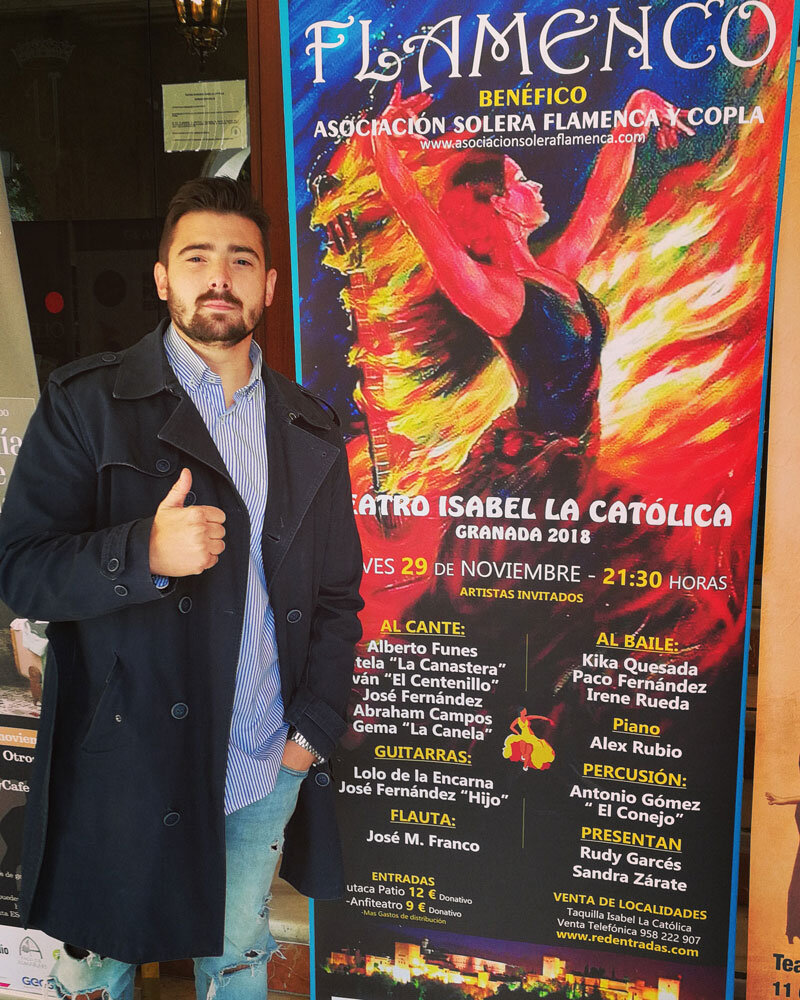 Is there anything else the world should know about flamenco?
Is there anything else the world should know about flamenco?
I think little by little, flamenco’s become rather well-known in the world, right? So what I would say is quédate con lo que te gusta (take from it/keep for yourself what you like [and leave the rest]).
There are a lot of aspects of flamenco and you don’t have to like everything about it. Things like flamenco jondo, los palos, etc are often sad songs, telling painful stories and not everyone likes that. I’m just saying that you don’t have to like every branch of it to appreciate flamenco. I’m a perfect example of that—I work in flamenco and yet after half an hour of flamenco jondo I leave because I just don’t like it that much. I can see the value in it, I respect it, but it’s not my cup of tea.
If you like the dancing, then watch the dancing. If you like the guitar, then listen only to the guitar. If you like the singing, then buy records. If you like the fusions then buy the records of people who are mixing it with other types of music. But remember one thing: it’s very different to listen to flamenco and to see it live. When you experience it in person, with the impressive scenery and all of that, you can appreciate it more. Whether you like it in and of itself, chances are you’ll walk away saying “I enjoyed myself” or “me lo ha pasado bien.”
Thank you so much to Rudy for this interview! We hope it helps all our readers understand flamenco a bit more.
(With credit to Pablo Muruaga Photography for many of the photos used in this article with permission from Rudy López Garcés.)


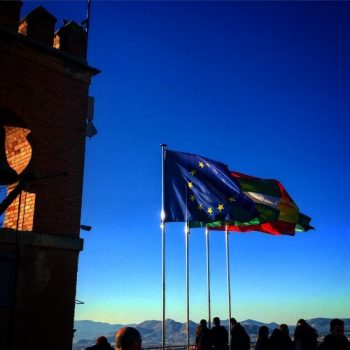
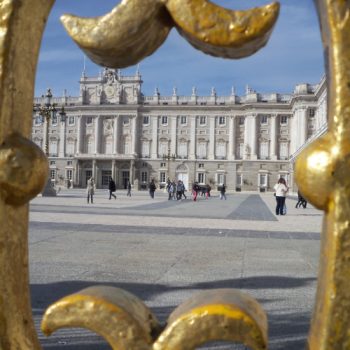
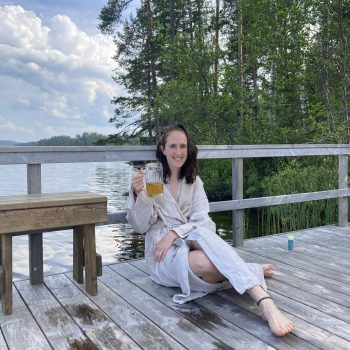
One Comment
Pingback: